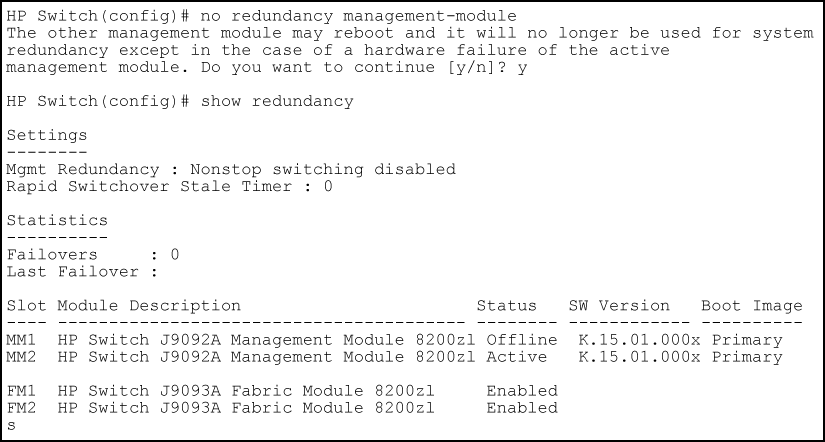To troubleshoot a suspect management module, you may want to operate the switch with redundant management disabled by entering this command:
After executing this command, the second management module will not boot into standby mode—it is offline and no longer receives configuration file changes from the active module. The active management module updates its config file with the information that redundancy is disabled.
|
|
|
![[NOTE: ]](images/note.gif) |
NOTE: Even if redundancy has been disabled, the specified management module becomes the active management module at the next system boot if you use the The second management module is enabled as the active management module in the event of a hardware failure of the first management module. |
|
|
Results of disabling redundancy shows that redundant management was disabled.
If you disable redundancy when there is only one management module in the switch, and then you insert a second management module, the second module never goes into standby mode. You must re-enable redundant management using this command:
The currently active module remains active on boot (assuming no selftest failure) unless you make the newly inserted management module active using this command:
The standby management module becomes the active management module.
